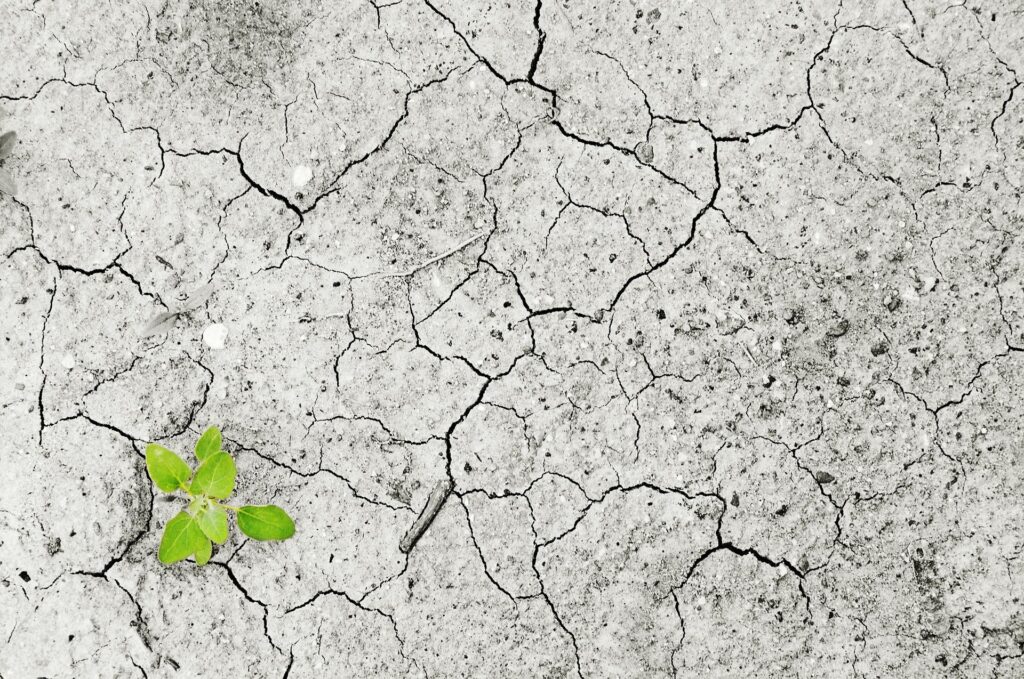
By Cristian Carlos. Special for Peninsula 360 Press [P360P]
The latest study on climate change and the western United States predicts that drought conditions in California will persist. Scientists have calculated that more than 40% of the severity of its effects is due to human activities, which are causing more frequent droughts in this part of America.
Snowpack normally melts and flows into rivers and reservoirs, providing about a third of California’s water supply. Now, thanks to global warming, it’s melting earlier and faster than usual, providing less water. This will likely lead to more water shortages and higher water prices. According to experts, the drought in California has reached the territory’s 44%, calling it an “exceptional drought,” the worst level on the scale.
For this reason, Ethnic Media Services hosted a briefing with a panel of experts to discuss the causes of the drought in California, its duration, its effects and alternatives that hope to reverse the effects of climate change.
According to Dr. Rajendra Shende, President of the TERRE Policy Center, a member of the Intergovernmental Panel on Climate Change who received the Nobel Peace Prize for his work on climate change, a drought occurred in western California 1,200 years ago. He also said that water scarcity is a problem affecting 4 billion people worldwide and that agencies like UN-Water are trying to unify their voice on droughts for this reason.
Shende noted that the water emergency in Africa and Asia is primarily due to the fact that it is so expensive to extract water from underground sources; “water shortages for these areas may be more related to climate change than anything else,” he said. Oman and Saudi Arabia are examples where it is possible to recycle up to 78% of their total consumed H2O supply by adopting some type of technology, according to research studies conducted by the United Nations Water Supply and Sanitation Association (UNWASA). Silicon Valley could integrate new technologies that would help increase our current recycling rate of 15% here in California.
Karina Herrera, WCRB environmental scientist, said that according to the 38% the US is in a severe to extreme drought since March 2022. The 53% is classified as moderate to extreme. Herrera mentioned that there is a pattern to drought in California: big conservation acts follow big droughts. In response, there are two approaches California has taken so far: immediate and long-term actions. Immediate responses include water supply and demand assessments for urban areas, Tier 2 shortage responses for those facing temporary shortages because they are already facing such shortages or have been identified as at risk of experiencing a water shortage this summer when demand increases significantly (approximately 60 million people), defining and prohibiting non-functional lawn irrigation practices in commercial sectors such as retail stores, hotels/motels/restaurants, offices, parks, shopping centers, airports, schools, etc., among others.
She noted that it is critical that water conservation become a priority, as, Herrera said, it protects beneficial uses by saving energy without increasing overall demand due to increased restrictions on the amount of water that can be used without penalty.
Heather Cooley of the Pacific Institute, an independent, nonpartisan global water think tank, said climate change is affecting water collection and distribution systems. Reversing the problem is a major challenge for everyone, not just California; “it’s an international problem,” Cooley said. The solution, she said, is to reduce water use in cities, meaning that rainwater harvesting, along with other measures such as installing more efficient systems, can save 481 TP3T of our total water use. Unfortunately, she said, there is no accurate data on rainwater harvesting in California, so it is difficult to estimate how much we need to do about California’s drought and shortage of clean water.
Sean de Guzman, director of the Snow Monitoring and Water Supply Forecasting Unit, mentioned that 451 TP3T of snowpack levels in California have dropped and that there is a lack of water in some lakes. He also stated that Lake Shasta is only at 391 TP3T of capacity, while Lake Oroville is at 511 TP3T. Sean reported that about 701 TP3T of the average water supply level is needed to be on par with historical data.
Dr. Josué Medellín-Azuara, associate professor at the UC Merced School of Engineering, stated that droughts are not going to disappear and that, on the contrary, they will become more frequent and more intense. He reported that 14,365 jobs were affected by the 2021 drought, resulting in losses of up to 1.7 billion dollars.
Medellín-Azuara painted an urgent picture, as future droughts will be exacerbated by repeated natural disasters, as well as depleted surface water and groundwater regulation. Increased irrigation needs due to population growth will exacerbate the gap between water supply and demand. “Ways we can increase resilience include reducing drought impacts through demand management and changes in crop mix, using natural infrastructure to protect against extreme weather events, building system flexibility into our designs for areas at risk of drought conditions or other disaster risks,” he said. These are expected to be more responsive to variable climate conditions than currently fixed systems (e.g. green roofs). He also said that "a system is needed for land reuse, that is, the development of new sites on environmentally degraded land so that it can be put back to productive use rather than being abandoned from an economic point of view just because it has become unusable from a hydrological perspective."
You may be interested in: Redwood City joins lawsuit against Monsanto Company for contamination

